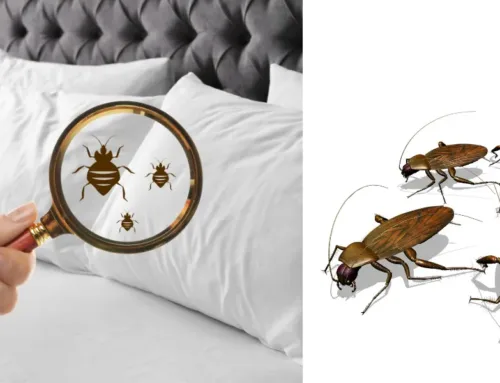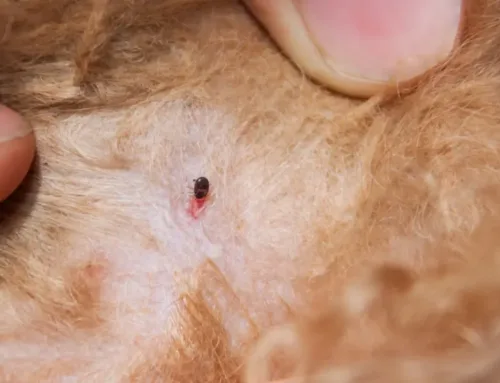It is not only disturbing to think that bed bugs can be in your automobile, but it is also a question that many people have, the question being: can bed bugs be in your car? These are small, blood sucking insects that are usually found in bedrooms and in their bed mattresses; however, given the right conditions, they may live in unlikely locations, such as your car. Knowing their ways of getting there, where they hide, and how to kill them is crucial in ensuring that both your home and vehicle are free of pests.
How Bed Bugs Can End Up in Your Car
Bed bugs are master hitchhikers. They do not fly or jump, but they attach themselves to clothes, baggage, and furniture and move without anyone noticing their presence of these creatures. You expose yourself to the possibility of bringing home infested materials to your car and introducing the bed bugs to the inside of your vehicle. This involves such cases as carrying used furniture home, carrying infected garments, or even sleeping in a bed and breakfast hotel with bed bugs.
Nevertheless, infestations within cars are not very common. Cars are no longer a stable source of a sleeping host like homes. Bed bugs like dark, still places near their food supply, human beings. However, when introduced by accident, they may live several months in a car, particularly in crevices of seats, carpets, or upholstery. If you suspect an infestation, seeking professional bed bug control in Coquitlam ensures thorough treatment and lasting protection for your home and vehicle.
Can Bed Bugs Survive in a Car?
Yes, bed bugs may be kept in a car for a long time, depending on the conditions. Such pests may survive several months without food, and adult pests may also survive one year under optimum conditions.
They are highly dependent on temperature when it comes to survival. To eliminate bed bugs, it is necessary to expose them to heat at temperatures above 113°F (45 °C) or cold (below 46 F 8 °C) over an extended period of time. During warm weather or in summer, a parked vehicle with direct sunlight can get so hot to the heat of kill them naturally. On the other hand, they may also be killed by exposure to freezing temperatures over a prolonged time in cold areas.
Bed bugs are, however, very adaptable. Providing that your car keeps fairly cool temperatures, they can still survive and even hatch outside, in some of the crevices or beneath the seat material.
Signs of Bed Bugs in Your Car
Spotting a bed bug infestation in your vehicle requires careful observation. Since they hide in tight, dark spaces, you may not see live insects right away. Look for signs such as reddish stains on seat fabric, small dark fecal spots, eggshells, or shed skins. You might also notice a faint musty odor if the infestation grows larger.
If you’ve been waking up with small, red, itchy bites on your arms, neck, or legs, and you frequently use your car, it’s worth checking the vehicle. Bed bugs don’t restrict themselves to sleeping areas; they’ll bite anytime they have access to exposed skin.
Where Bed Bugs Hide in Cars
Bed bugs can hide in a surprising number of places inside vehicles. Common hiding spots include seams of car seats, between cushions, under floor mats, in trunk carpeting, and inside small cracks or screw holes. They may also cling to car seat covers, child safety seats, or fabric accessories.
If your vehicle often carries luggage, laundry, or furniture, bed bugs can easily travel to and from your car, spreading the infestation between environments.
How to Get Rid of Bed Bugs in Your Car
If you discover bed bugs in your car, don’t panic. Eliminating them is possible with thorough cleaning and temperature treatment. Here’s how to approach it:
Start by vacuuming every part of your vehicle, especially seams, crevices, and under seats. Dispose of the vacuum bag immediately afterward to prevent re-infestation. Heat is one of the most effective methods to kill bed bugs. Parking your car in direct sunlight on a hot day with windows sealed can raise interior temperatures high enough to destroy them. To enhance the heat effect, you can cover windows with dark plastic or use portable heaters designed for automotive use.
Steam cleaning is another effective solution. High-temperature steam can penetrate deep into upholstery and kill bed bugs on contact. It’s important to use controlled airflow to avoid scattering the insects instead of killing them.
For more persistent infestations, diatomaceous earth, a natural, silica-based powder, can be used. Sprinkle it lightly on carpets and seats, let it sit for a few hours, and then vacuum thoroughly. This substance dehydrates the insects, leading to their death, but it must be handled carefully to avoid inhalation.
If DIY methods fail, consider hiring a pest control professional who specializes in bed bug extermination. Professionals can use targeted heat or chemical treatments designed for vehicles, ensuring complete eradication.
Preventing Bed Bugs from Infesting Your Car
Prevention is always easier than removal. Avoid picking up secondhand furniture or mattresses without inspection, as these are common sources of bed bugs. Keep your car free from clutter since clutter provides hiding spaces. Vacuum the interior regularly, paying attention to cracks and seams.
When traveling, inspect hotel rooms for signs of bed bugs before unpacking. Use luggage racks instead of placing bags on the bed or floor. After returning home, wash all travel clothes in hot water and dry them at high temperatures before bringing them into your car or house. If you use shared laundry facilities, transport clothes in sealed plastic bags to reduce the chance of picking up unwanted passengers.
FAQs About Bed Bugs in Cars
- How long can bed bugs live in a car?
Bed bugs can survive several months without feeding, and in ideal conditions, adults can live up to a year inside a vehicle. - Can heat from the sun kill bed bugs in a car?
Yes, if interior temperatures exceed 113°F (45°C) for at least 90 minutes, heat can effectively kill all stages of bed bugs. - Can bed bugs lay eggs in cars?
Yes, bed bugs can lay eggs in hidden spots such as seat seams or carpet fibers if they find the conditions suitable. - Do car vacuums remove bed bugs completely?
Vacuuming can help reduce the population, but it may not eliminate eggs or insects hidden deep in fabrics. Combining vacuuming with heat or steam treatments gives better results. - Can bed bugs travel between your car and home?
Absolutely. Bed bugs can hitchhike on clothing or belongings, easily moving between vehicles, homes, and workplaces.
Final Thoughts
So, can bed bugs live in your car? Unfortunately, yes, though infestations are uncommon, they can happen if the insects are transported through clothing, luggage, or furniture. Because bed bugs can survive for months without food and hide in tight spaces, early detection and treatment are vital. Regular cleaning, temperature control, and careful inspection from ASM Pest Control can protect your car and your home from these unwelcome pests. When in doubt, professional pest control can ensure complete peace of mind.






